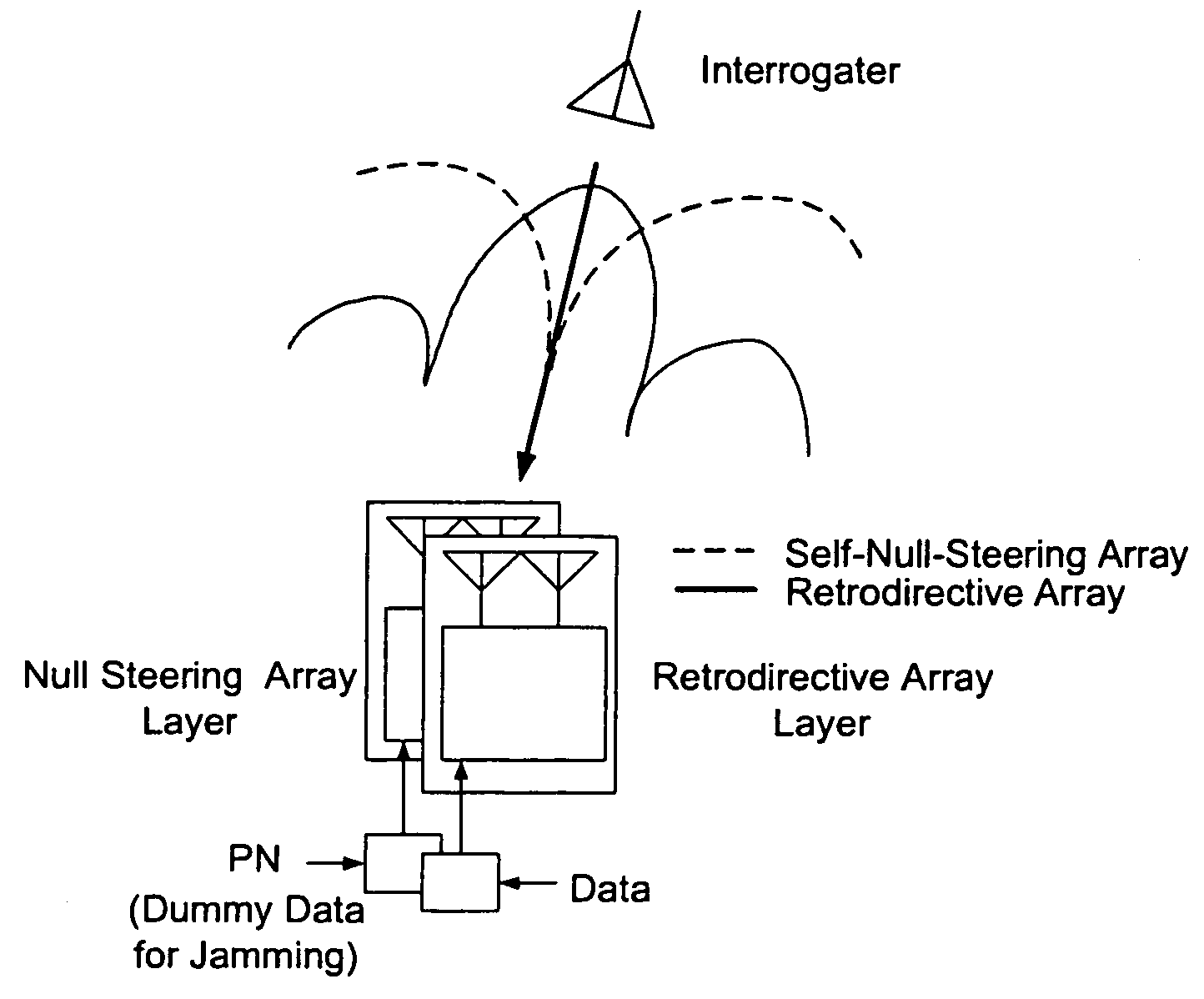Microwave self-phasing antenna arrays for secure data transmission & satellite network crosslinks
a technology of data transmission and satellite network, applied in wave based measurement systems, direction finders using radio waves, instruments, etc., can solve the problems of increasing system size and cost, reducing the possibility of catastrophic single-point failure, and others can take up the slack, so as to maximize the signal-to-noise ratio and super-high directivity.
- Summary
- Abstract
- Description
- Claims
- Application Information
AI Technical Summary
Benefits of technology
Problems solved by technology
Method used
Image
Examples
Embodiment Construction
[0028]An illustration of the first aspect of the invention is shown in FIG. 1. A high-directivity transponder system for secure data transmission employs two types of self-steering arrays: a retrodirective array 10 for transmitting a data signal with a directed peak and a self-null-steering array 12 for transmitting a jamming signal with a directed null. When these arrays are interrogated 14, the retrodirective array 10 transmits a signal beam with a peak directed toward the interrogator source (indicated by the continuous line waveform), while the self-null-steering array sends a jamming signal in other directions, with a null directed toward the interrogator source (indicated by the dashed line waveform). Due to reception of the data signal peak superimposed on the jamming signal null, the interrogator can demodulate the true data reliably without suffering from the jamming signal. In other directions outside of the null beamwidth, the jamming signal power exceeds that of the resi...
PUM
 Login to View More
Login to View More Abstract
Description
Claims
Application Information
 Login to View More
Login to View More - R&D
- Intellectual Property
- Life Sciences
- Materials
- Tech Scout
- Unparalleled Data Quality
- Higher Quality Content
- 60% Fewer Hallucinations
Browse by: Latest US Patents, China's latest patents, Technical Efficacy Thesaurus, Application Domain, Technology Topic, Popular Technical Reports.
© 2025 PatSnap. All rights reserved.Legal|Privacy policy|Modern Slavery Act Transparency Statement|Sitemap|About US| Contact US: help@patsnap.com



